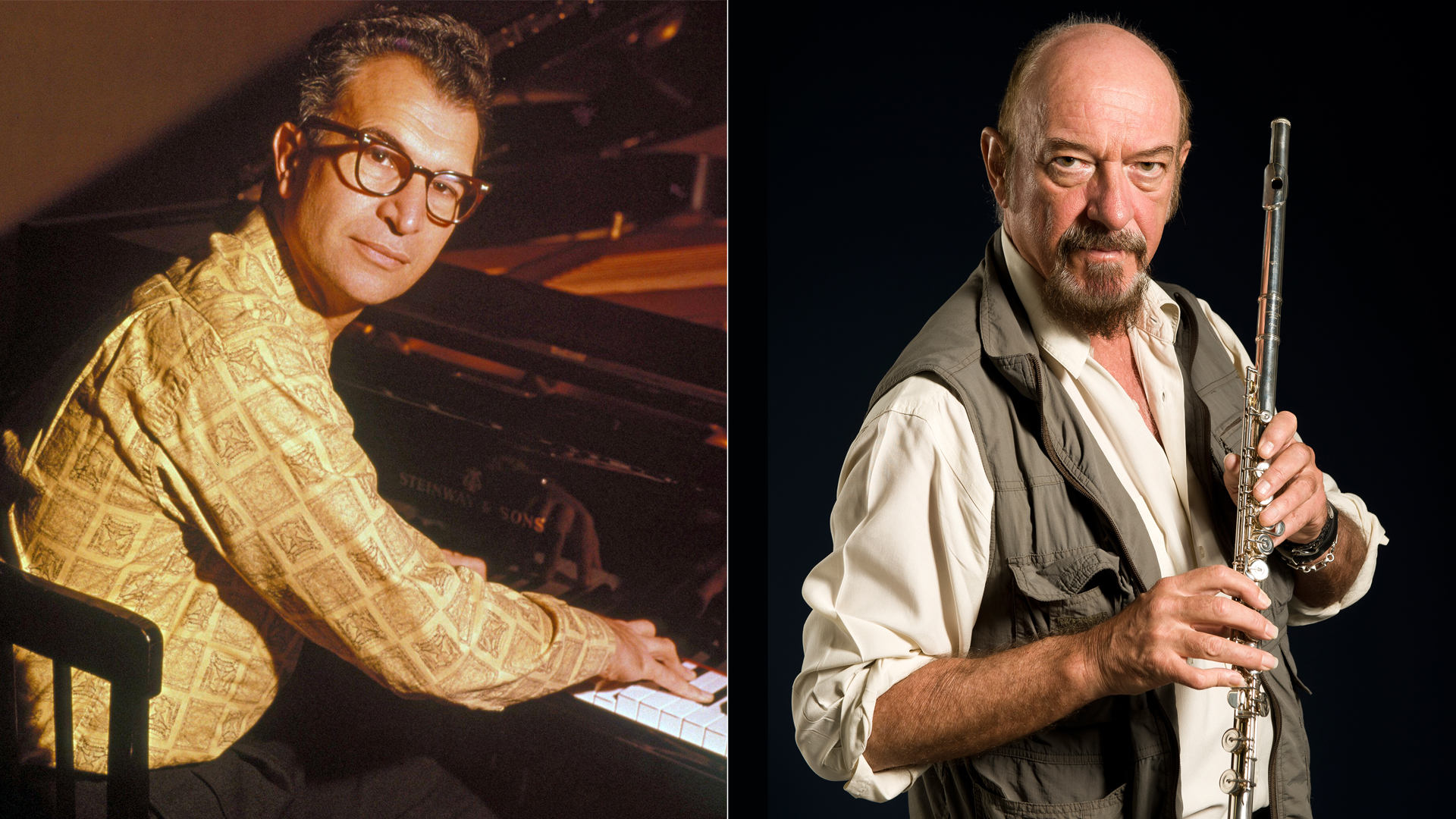“I thought whatever made me happy’s gonna make everybody happy. I didn’t think it out”: How legendary guitar designer Les Paul bet on the “Black Beauty” in 1954 and lost…
Despite its glammed up features and appearance, Gibson’s “Black Beauty” Les Paul Custom aka “the fretless wonder” was no match against the glitzy Goldtop. Discover its rocky road to guitar greatness
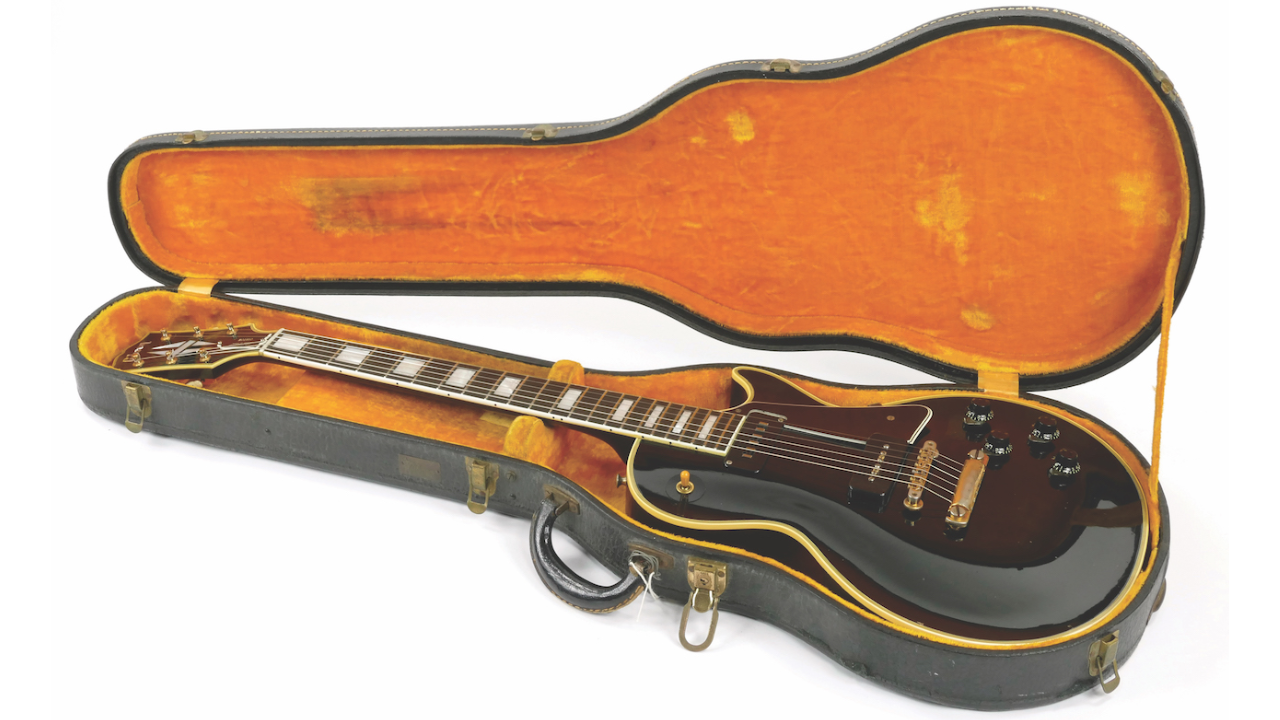
Gibson’s iconic Black Beauty, the Les Paul Custom, has long represented top-flight elegance in the solidbody electric guitar. Yet as it evolved from its origins as a black-tie-worthy accessory for the dinner-club set, it proved its versatility in the hands of some heavy rockers too.
Guitar star and inventor Les Paul said on several occasions that when he sat down with Gibson in the early 1950s to devise the revolutionary instrument that would carry his name, he envisioned two versions of the Les Paul Model: a standard iteration with a goldtop finish and nickel-plated hardware, and a custom model that would be the crème de la crème.
This Les Paul Custom would be dressed in formal wear, like the tux a jazz artist might put on for a major performance. The so-called Goldtop was the first model out of the box in 1952, with the Custom on the back burner for further development. Once the first model was off and running, Gibson turned its attention to designing the Les Paul Custom in 1953, planning for a release the following year.
In addition to Paul’s desired appointments, they gave the guitar the best of Gibson’s new developments in hardware and electronics, too.
In a taped interview for the Gourmet Guitars DVD series in 2009, Paul spoke of meeting with CMI chairman Maurice Berlin. “The first thing he asked me was the color, and I said ‘Gold,’” he reported.
“Other people jumped up and said, ‘Don’t pick the color gold, it’s going to turn green on you. You’re going to have a lot of problems with a gold guitar.’ But the chairman of the board of Gibson says, ‘He wants gold, gold it is! … What’s the other color going to be, because we’re going to make two of them?’ I picked black.”
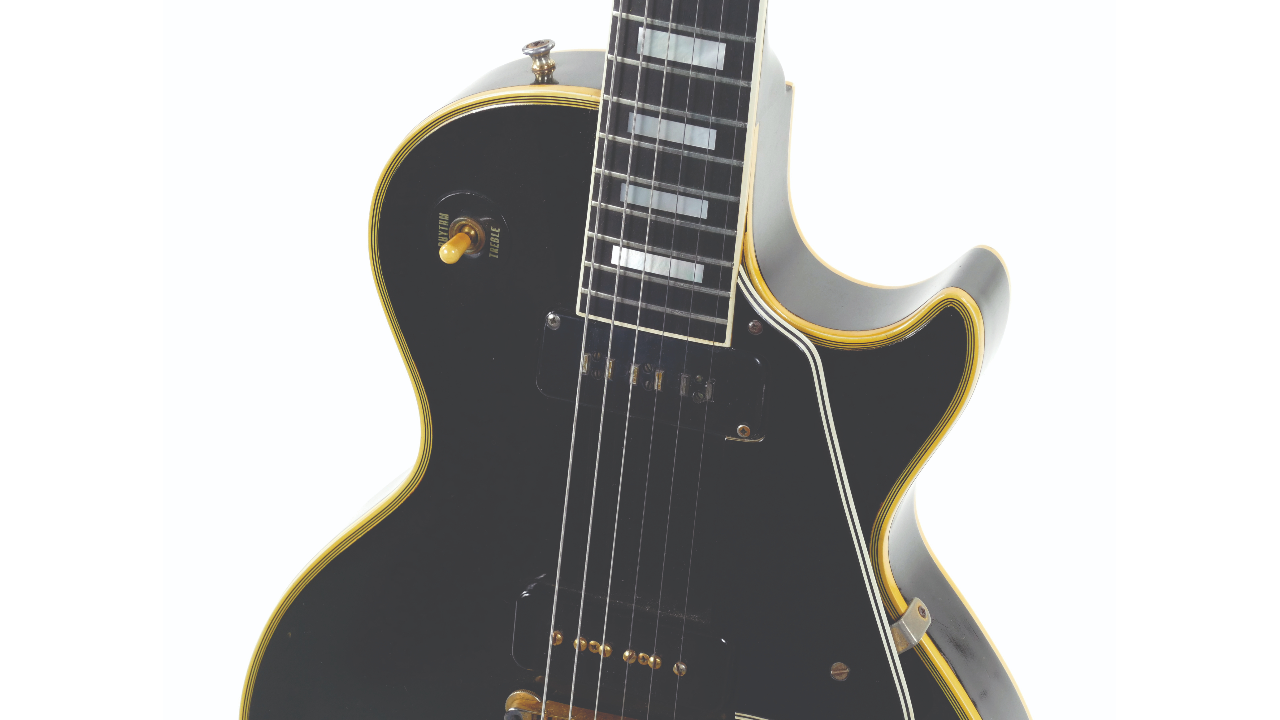
In addition to the striking ebony-black finish on its body and the back of its neck, the Les Paul Custom received an ebony fingerboard, larger celluloid block inlays, seven-ply binding around its top, and five-ply binding around its back and headstock.
Get The Pick Newsletter
All the latest guitar news, interviews, lessons, reviews, deals and more, direct to your inbox!
The latter was also larger than that of the Goldtop, with a large split-diamond inlay. All hardware was, naturally, plated in gold. At its introduction in 1954 the Les Paul Custom was priced at $325, a full $100 more than the standard Les Paul Model with gold finish.
Looks aside, several other features made it sound and feel somewhat different from its sibling. For one, the Les Paul Custom of 1954 was the first guitar to receive Gibson’s revolutionary new ABR-1 Tune-o-matic bridge, which was partnered with a stop-bar tailpiece or optional Bigsby vibrato.
Its inclusion marked a major step forward in the evolution of the Les Paul in general. Though not a guitarist himself, Gibson president Ted McCarty had seen the need for a more efficient and adjustable bridge, and had personally designed this new piece of hardware, which had individual string saddles for precise intonation adjustment and easy height adjustment via a pair of thumb wheels on its body-mounted bolts.
Perhaps less impactful were the Custom’s Sealfast tuners with pearloid buttons, which were somewhat different from the Klusons on the Goldtop.
Two other changes rendered it a guitar that both felt and sounded entirely different from the Goldtop. First, at Paul’s request, the Custom was fitted with low, narrow frets, a feature that the artist felt made it faster to play and which earned it the nickname the Fretless Wonder.
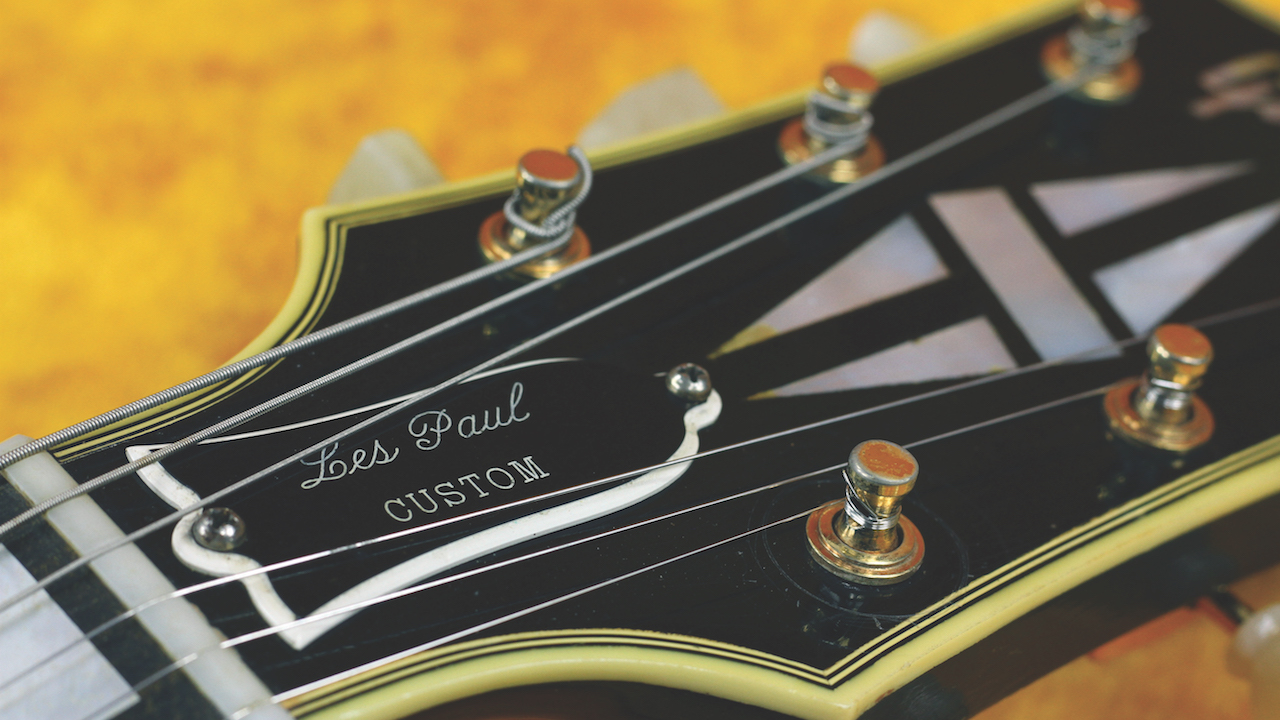
This feature failed to excite many guitarists, especially some years later, when heavy string bending became a big part of the blues-rock repertoire. The frets left some players feeling that they didn’t have enough meat to grab onto without bottoming out while pushing strings hard.
Second, the Custom carried an entirely new pickup in its neck position. Developed by Seth Lover in late 1952 or ’53 at the behest of McCarty, the Alnico V pickup looked somewhat like a P90 but was constructed entirely differently and intended as an upgrade.
While the P90 (and the PAF humbucker to come) had bar magnets beneath the pickup’s coil, the Alnico V pickup used six individual rectangular Alnico V magnets as pole pieces.
These were placed within the pickup’s coil, an alteration that lent it a crisp, bright tone with plenty of snap and clarity. The appearance of those six pole pieces on the pickup’s front led to it being referred to as “the staple pickup.”
Employed on several of Gibson’s high-end archtop electrics of the mid ’50s, including the L-5CES, ES-5 and Byrdland, the Alnico V pickup made its debut on the original Les Paul Custom of 1954 and helped enhance string definition in the neck position.
With its individual, height-adjustable alnico poles, the Alnico V has much in common with the DeArmond Model 200, then best known as the Dynasonic pickup, and used in Gretsch guitars. It seems clear that McCarty and Lover were chasing that sound with the design.
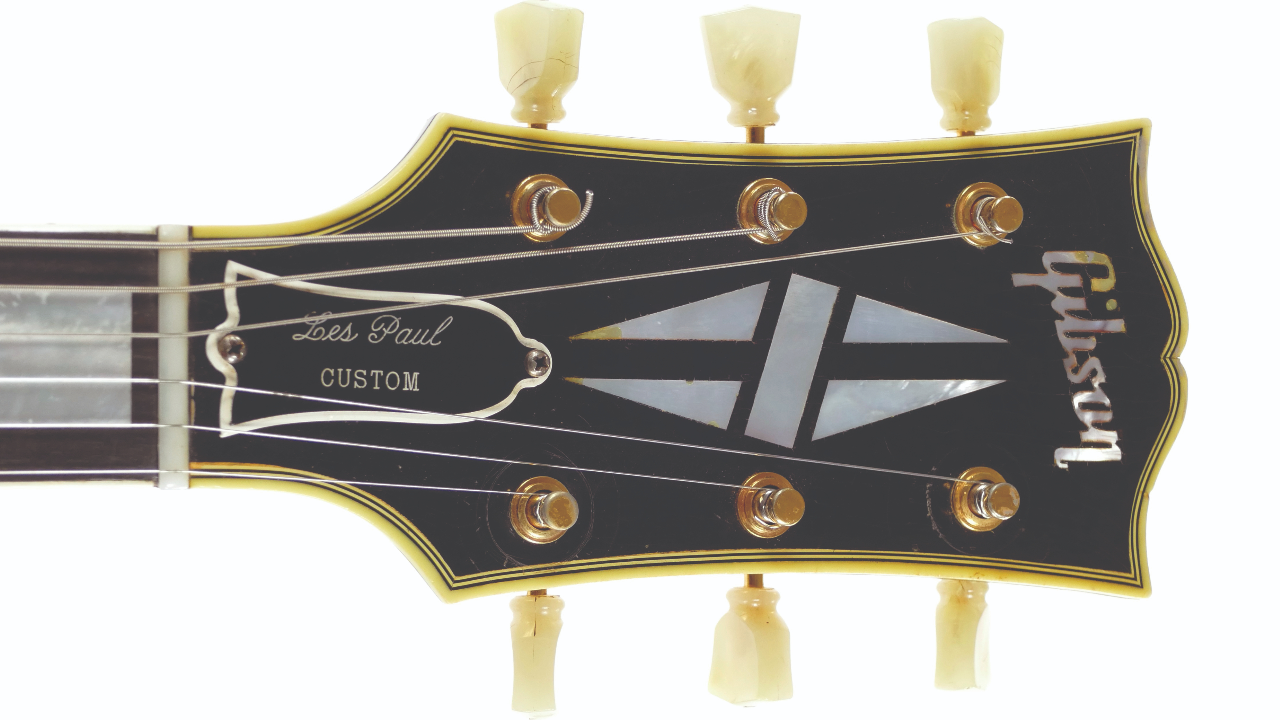
Fender’s pickups also had individual alnico poles, although they weren’t adjustable. Years later, Lover as much as said in several interviews that the only reason he used rectangular bar magnet segments rather than round rod segments was to differentiate Gibson’s pickup from others on the market.
There was one more very significant difference between the Goldtop and Custom. While the opaque finish of both models hid the wood used for the top, the Custom was made entirely of mahogany, with a carved mahogany top rather than the Goldtop’s carved maple top.
The variation in timber also contributed to further slight differences in tone between the two, with a little more warmth in the Custom, and less of the Goldtop’s maple-fueled snap and clarity, although some of that was made up for by the hard ebony fingerboard and the Alnico V pickup in the neck position.
The specs of the Custom bring up yet another Les Paul irony, and there would be more to come: When designed and constructed precisely as Les himself preferred it, the guitar often appealed to fewer players.
Gibson shipping records show that 1,912 single-cutaway Les Paul Customs were sold between its introduction and its deletion from the line at the end of 1960, compared to around 7,000 Goldtops sold in the same period, not including the Goldtop sales from ’52 to ’53.
As Les himself put it to Gourmet Guitars, “It made me happy, and of course I thought whatever made me happy’s gonna make everybody happy. I didn’t think it out. I just knew that’s what I liked.”
Nearly two decades later, this phenomenon would play itself out even further with the release of the Les Paul Personal, Professional and Recording models, which never attained much popularity.
It’s difficult to conjure many notable players of the early Les Paul Custom. The most famous, perhaps, is Peter Frampton, although he acquired his ’54 Black Beauty only after it had been modified to ’57 specs with the addition of three humbucking pickups.
Robby Krieger of the Doors also played a ’54, but his was modified with a ’70s-era mini-humbucker in the neck position. Steve Jones of the Sex Pistols is best known for his white ’74 Custom, but he also owned and occasionally played an original ’54. Once the humbucking pickup hit town, though, the Les Paul Custom had a far greater uptake.
Essential ingredients
- Single-cutaway solid mahogany body with a carved arched mahogany top
- Solid mahogany neck, 24 3/4–inch scale length
- Bound ebony fingerboard with block inlays
- Seven-ply top binding, five-ply back and headstock binding on enlarged headstock.
- One P90 pickup bridge position, one Alnico V pickup neck position
- Gold-plated Tune-o-matic bridge, stopbar tailpiece and Sealfast tuners
For more information visit Gibson
Dave Hunter is a writer and consulting editor for Guitar Player magazine. His prolific output as author includes Fender 75 Years, The Guitar Amp Handbook, The British Amp Invasion, Ultimate Star Guitars, Guitar Effects Pedals, The Guitar Pickup Handbook, The Fender Telecaster and several other titles. Hunter is a former editor of The Guitar Magazine (UK), and a contributor to Vintage Guitar, Premier Guitar, The Connoisseur and other publications. A contributing essayist to the United States Library of Congress National Recording Preservation Board’s Permanent Archive, he lives in Kittery, ME, with his wife and their two children and fronts the bands A Different Engine and The Stereo Field.
"It's a powerful, versatile variation on the timeless Telecaster, with a vital back story to boot." We review the Fender Stories Collection Mike Campbell Red Dog Telecaster
Guitar Center's Guitar-A-Thon is back, and it includes a colossal $600 off a Gibson Les Paul, $180 off a Fender Strat, and a slew of new exclusive models

